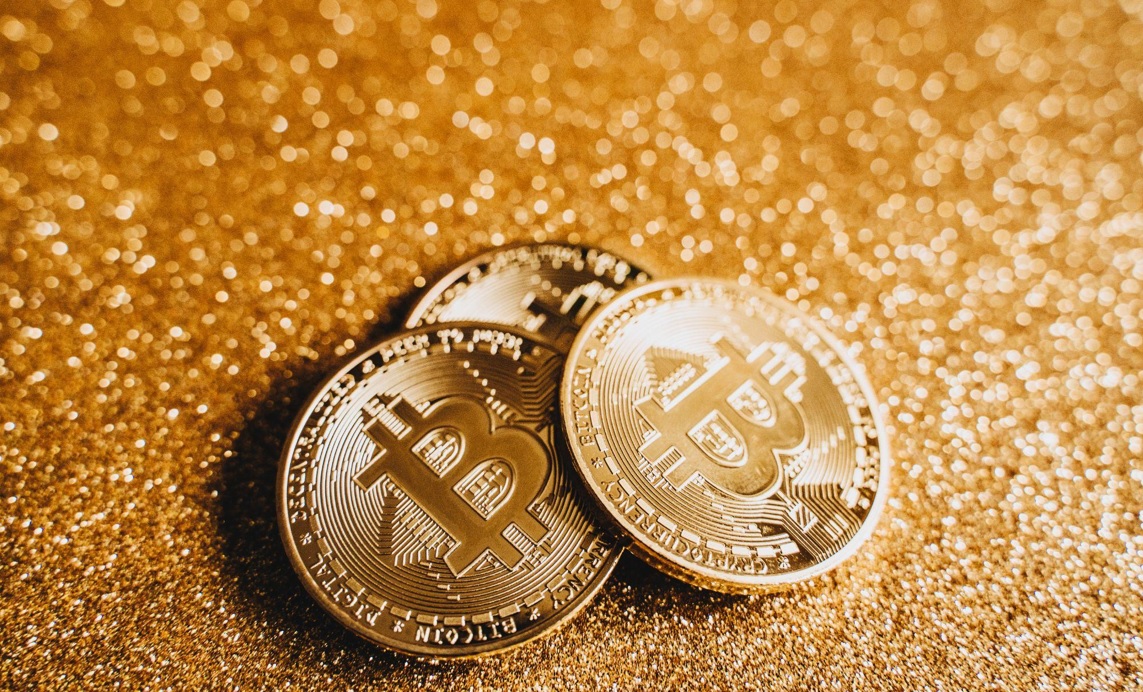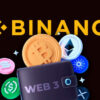
Exploring the Diverse Landscape of Digital Alternative Asset Classes
In today’s dynamic financial landscape, traditional investment avenues are no longer the sole focus of investors. The rise of digital alternative asset classes has ushered in a new era of financial diversification and innovation.
These digital assets, ranging from cryptocurrencies to non-fungible tokens (NFTs), tokenized real assets, and decentralized finance (DeFi) tokens, have captured the attention of investors seeking novel opportunities and potential high returns.
This exploration delves into the multifaceted world of digital alternative asset classes, shedding light on their unique characteristics, investment strategies, challenges, and the promising future they hold in reshaping the investment landscape.
Traditional vs. Digital Assets
Traditional assets have long been the bedrock of investment portfolios, encompassing tangible assets like stocks, bonds, real estate, and commodities.
These assets are typically governed by well-established regulatory frameworks and are traded on traditional financial markets. Investors have historically relied on traditional assets for wealth preservation and income generation.
In contrast, digital assets represent a relatively new and rapidly evolving category of assets. They exist purely digitally, often relying on blockchain technology to create, validate, and secure transactions. Some key differences between traditional and digital assets include:
- Physical Presence
- Liquidity and Accessibility
- Regulation
- Counterparty Risk
- Volatility
- Ownership and Custody
- Fractional Ownership
- Innovation and Programmability
Physical Presence
Traditional assets have a physical presence, such as a share certificate or real estate deed, whereas digital assets are entirely digital and exist only as cryptographic tokens on a blockchain.
Liquidity and Accessibility
Digital assets are often more liquid and accessible, allowing 24/7 trading and global access. Traditional assets may have limited trading hours and geographical restrictions.
Regulation
Traditional assets are subject to well-defined regulatory oversight in most jurisdictions, offering investors security. Digital assets, on the other hand, face varying degrees of regulation and legal scrutiny, which can impact their use and adoption.
Counterparty Risk
Traditional assets may involve intermediaries like banks or brokers, introducing counterparty risk. Digital assets can be transacted peer-to-peer, reducing the need for intermediaries and associated risks.
Volatility
Digital assets, especially cryptocurrencies, are known for their high volatility compared to traditional assets like bonds or stable stocks.
Ownership and Custody
Owning and securing traditional assets often involves physical documents or centralized institutions. Digital asset ownership relies on private keys, and custody can be self-managed or entrusted to third parties like cryptocurrency exchanges.
Fractional Ownership
Digital assets can be easily divided into smaller units, enabling fractional ownership, less familiar with traditional assets.
Innovation and Programmability
Digital assets can be programmed to execute specific functions, such as smart contracts in blockchain platforms like Ethereum. Traditional assets lack this level of programmability.
While traditional assets remain a cornerstone of investment portfolios due to their stability and regulatory framework, digital assets offer new opportunities for diversification, accessibility, and innovation.
The choice between traditional and digital assets depends on an investor’s risk tolerance, investment goals, and understanding of the unique characteristics of each asset class.
Key Digital Alternative Asset Classes
Here are the critical digital alternative asset classes:
- Cryptocurrencies
- Non-Fungible Tokens (NFTs)
- Tokenized Real Assets
- Decentralized Finance (DeFi) Tokens
- Stablecoins
- Security Tokens (STOs)
- Utility Tokens
- Digital Collectibles
- Tokenized Securities
- Governance Tokens
Cryptocurrencies
Cryptocurrencies like Bitcoin and Ethereum are perhaps the most well-known digital alternative assets. They are decentralized digital currencies that use cryptography for security. Investors see them as both a store of value and a potential medium of exchange, and they have gained widespread adoption and attention.
Non-Fungible Tokens (NFTs)
NFTs represent ownership of unique digital or physical assets, often associated with art, collectibles, music, and virtual real estate. They are indivisible and verifiable on the blockchain, making them valuable for creators and collectors.
Tokenized Real Assets
This involves representing real-world assets (e.g., real estate, art, and commodities) as digital tokens on a blockchain. Tokenization enables fractional ownership, increased liquidity, and the potential for democratizing access to traditionally illiquid assets.
Decentralized Finance (DeFi) Tokens
DeFi tokens are native assets of decentralized finance platforms. They power various financial services like lending, borrowing, yield farming, and decentralized exchanges. These tokens offer opportunities for earning yields and participating in open, permissionless financial ecosystems.
Stablecoins
Stablecoins are digital assets designed to maintain a stable value, often pegged to a fiat currency like the US dollar or backed by collateral on a blockchain. They provide a bridge between the crypto and traditional financial worlds, offering stability for trading and transactions.
Security Tokens (STOs)
Security tokens represent ownership of traditional financial instruments like stocks, bonds, or real estate but are issued and traded on blockchain platforms. They aim to enhance transparency and streamline regulatory compliance.
Utility Tokens
Utility tokens are access keys to a particular platform or network, granting users specific rights or benefits. They are commonly used in blockchain projects and represent anything from voting power to discounts on services within the network.
Digital Collectibles
Beyond NFTs, digital collectibles encompass virtual assets, such as in-game items, digital trading cards, and virtual pets. They thrive in the gaming and entertainment industries, often offering unique experiences and ownership rights.
Tokenized Securities
Traditional securities like stocks and bonds are represented as digital tokens on a blockchain. Tokenized securities enhance liquidity, reduce settlement times, and improve transparency in traditional financial markets.
Governance Tokens
Governance tokens grant holders the right to participate in the decision-making processes of blockchain networks or decentralized organizations. They enable stakeholders to propose and vote on changes to the protocol’s rules.
These key digital alternative asset classes offer diverse investment opportunities with unique characteristics, risks, and potential rewards. Investors interested in this rapidly evolving space should carefully research and understand the dynamics of each asset class before participating in the market.
Investment Strategies
Here are some investment strategies for digital alternative asset classes:
- Diversification
- Long-Term Hold
- Active Trading
- Dollar-cost averaging (DCA)
- Staking and Yield Farming
- Research and Due Diligence
- Risk Management
Diversification
Diversifying your portfolio across different digital alternative asset classes can help spread risk. Avoid putting all your funds into a single asset type. Allocate your investments among cryptocurrencies, NFTs, tokenized tangible assets, and DeFi tokens to reduce vulnerability to any one market’s fluctuations.
Long-Term Hold
Consider a long-term “buy and hold” strategy, especially for cryptocurrencies like Bitcoin and Ethereum. Historically, they have shown significant growth over extended periods. Patience can pay off but be prepared for volatility along the way.
Active Trading
For more experienced investors, active trading involves buying and selling assets within shorter timeframes to profit from price fluctuations. This strategy requires a deep understanding of market trends, technical analysis, and risk management.
Dollar-Cost Averaging (DCA)
DCA involves regularly investing a fixed amount of money, regardless of asset price fluctuations. This strategy reduces the impact of market volatility and can be less stressful for long-term investors.
Staking and Yield Farming
In the DeFi space, you can earn passive income by staking or providing liquidity to decentralized platforms. This involves locking up assets in return for rewards or interest. Research and choose platforms with care, as DeFi can be high-risk.
Research and Due Diligence
Thoroughly research the assets you’re considering. Understand the technology, the team behind the project, the use case, and the competitive landscape. Stay informed about news and developments in the space.
Risk Management
Set clear rules for stop-loss orders and profit-taking targets. Determine the percentage of your portfolio allocated to digital alternative assets and stick to your plan to avoid emotional trading.
Remember that the digital alternative asset market is highly speculative and volatile. It’s crucial to invest only what you can afford to lose and continually educate yourself about this evolving space.
As with any investment, risks are involved, so it’s essential to approach it with a well-thought-out strategy and a long-term perspective.
Challenges and Risks
Here are the challenges and risks in digital alternative asset investments:
- Regulatory Uncertainty
- Security Concerns
- Volatility
- Lack of Consumer Protection
- Market Liquidity
- Custody Risks
- Scams and Fraud
Regulatory Uncertainty
The regulatory environment for digital alternative assets is still evolving in many jurisdictions. Regulation changes can impact the legality and taxation of investments, creating uncertainty for investors.
Security Concerns
Cybersecurity risks are significant in the digital asset space. Hacks, data breaches, and thefts from cryptocurrency exchanges and wallets can result in the loss of funds. Proper security measures are essential.
Volatility
Digital assets, particularly cryptocurrencies, are known for their price volatility. Rapid and unpredictable price swings can lead to substantial gains or losses in a short period.
Lack of Consumer Protection
Unlike traditional financial markets, investors often have limited recourse in case of disputes or fraud. Many digital assets operate in a decentralized, trustless environment, making it challenging to recover lost funds.
Market Liquidity
Liquidity can vary significantly among digital alternative assets. Some tokens may have low trading volumes, making buying or selling large amounts challenging without impacting the price.
Custody Risks
Properly securing digital assets can be complex. If private keys are lost or stolen, access to funds may be permanently restricted. Custody services may have vulnerabilities or regulatory issues.
Scams and Fraud
The digital asset space has been a breeding ground for scams, including Ponzi schemes, pump-and-dump schemes, and fraudulent initial coin offerings (ICOs). Investors should exercise caution and conduct due diligence.
To navigate these challenges and risks, investors must conduct thorough research, practice risk management, stay informed about regulatory changes, and consider seeking professional advice.
Additionally, only invest funds you can afford to lose, given the inherent volatility and uncertainty in the digital asset space.
Future Trends
Here are some future trends in digital alternative asset investments:
- Mainstream Adoption
- Stablecoins for Payments
- Tokenization of Traditional Assets
- Decentralized Finance (DeFi) Evolutio
- Central Bank Digital Currencies (CBDCs)
- NFT Expansion
- Layer 2 Solutions
Mainstream Adoption
As regulatory clarity improves and significant financial institutions embrace digital assets, mainstream adoption will likely increase. This could result in more institutional investments and broader digital asset offerings.
Stablecoins for Payments
Stablecoins are poised to play a significant role in everyday transactions, offering stability compared to volatile cryptocurrencies. They may become a preferred choice for cross-border payments and remittances.
Tokenization of Traditional Assets
The tokenization of real estate, art, and other traditional assets is expected to grow. This trend can make investing in such assets more accessible and liquid.
Decentralized Finance (DeFi) Evolution
DeFi protocols will likely become more user-friendly and secure, attracting a broader user base. New innovations in DeFi, such as yield optimization strategies and asset management, may emerge.
Central Bank Digital Currencies (CBDCs)
Several central banks are exploring or piloting CBDCs. These government-backed digital currencies could profoundly impact the digital asset landscape, potentially serving as a bridge between traditional finance and cryptocurrencies.
NFT Expansion
Non-fungible tokens (NFTs) are expected to expand beyond art and collectibles. Use cases in gaming, virtual real estate, music, and entertainment will likely increase, driving NFT adoption.
Layer 2 Solutions
Scalability and high transaction fees are challenges blockchain networks like Ethereum face. Layer 2 solutions, such as sidechains and rollups, aim to address these issues, improving the efficiency and usability of blockchain platforms.
Investors and industry participants must stay informed about these trends and adapt their strategies accordingly. The digital alternative asset space is dynamic and rapidly evolving, presenting opportunities and challenges for those involved.
Conclusion
The digital alternative asset classes world presents a dynamic and evolving landscape reshaping the traditional investment paradigm. From cryptocurrencies and NFTs to tokenized tangible assets and DeFi tokens, these digital assets offer diverse opportunities for investors seeking new avenues of growth and diversification.
However, with great potential comes significant challenges and risks. Regulatory uncertainty, security concerns, and market volatility underscore the importance of informed decision-making and risk management in this space.
Investors should approach digital alternative assets cautiously, conduct thorough research, and stay vigilant against scams and fraud.
In exploring the diverse landscape of digital alternative asset classes, we’ve touched upon the foundational aspects, risks, investment strategies, and future trends that shape this transformative field.
Stay informed, adaptable, and prudent as the digital frontier unfolds, which will guide those venturing into the exciting world of digital alternative assets.





